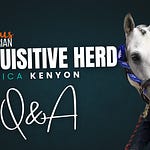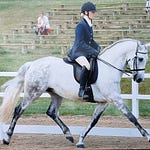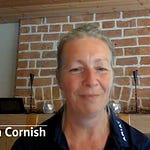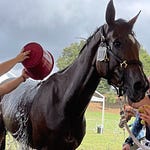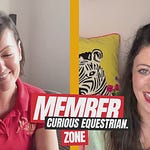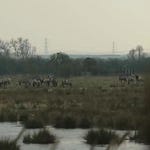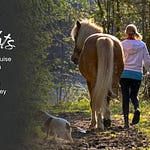There's something really compelling about watching Paula Curtis work with horses. In this training video, she walks into a pasture with a tarp, some traffic cones, and a barrel, not to drill the horses on anything specific, but to find out what the horses themselves find interesting.
It's a totally different way of thinking about working with horses. Instead of showing up with a plan of what we want to accomplish, she's asking the horses what captures their attention and curiosity.
A Different Approach
"Too often, we go into our horses' lives with preconceived notions, with an agenda," Jack explains in the video. "We need to get X, Y, and Z done, and we're going to make it happen. And this doesn't create a meaningful relationship."
What happens instead is pretty fascinating. As Paula introduces new objects to the small herd, you can see each horse's personality shine through. Felix, the black horse with four white legs, comes right up with bold curiosity. Gimli, the chestnut, hangs back and watches, each response telling her something important about that individual horse.
Paula points out all the little conversations happening between the horses, the way they approach and then back off when they're unsure, and how they move their heads up and down to get a better look at things. It's like getting a masterclass in reading horse body language.
What Makes This Work
The video shows several things that really make sense once you see them:
Building curiosity naturally: When the horses show interest in something, Paula moves it away slightly. This actually makes the horses more curious, working with their instincts instead of against them.
Seeing each horse as an individual: Every horse in the group reacts differently, and that's valuable information. Understanding these differences lets you meet each horse where they are.
Your energy matters: She emphasizes staying calm and relaxed, which invites horses to explore rather than worry about what you might do to them.
Making things interesting: Bringing in new objects gives horses something to think about while creating positive associations with being around people.
The Philosophy Behind It
Jack and Paula Curtis have been teaching this way since 1994, and their whole approach is based on the idea that real horsemanship starts with the human. They see horses as mirrors, they reflect back whatever energy and intention we bring to them.
"When you work with the horse's mind first, the body naturally follows," Jack explains. This flips traditional training on its head, focusing on understanding and partnership instead of just getting compliance.
Paula adds that horses respond to what's happening inside us, our thoughts, emotions, and focus. Learning to stay present and aligned doesn't just help with horses; it helps with everything else too.
What You Can Actually Use
The video gives you practical things to try right away:
Watch the details: Notice ear position, how horses move their heads, what they're actually paying attention to
Time it right: Learn when to step forward and when to give space based on what the horse is telling you
Check your energy: Be aware of how your mood and stress level affect your horse
Set up opportunities: Give horses interesting things to explore and figure out
Why This Matters
The really interesting thing about this approach is how it changes the whole relationship. Instead of asking "How do I get my horse to do what I want?", you start asking "What does my horse find interesting, and how can we explore that together?"
Jack calls these "life experiences" rather than training sessions. When horses start to associate you with curiosity, play, and positive discoveries, they naturally become more willing partners.
Beyond the Arena
Students who work this way often find that the patience and awareness required for good horsemanship spills over into other parts of their lives. The skills you develop, staying present, reading non-verbal communication, managing your emotions, turn out to be pretty useful everywhere.
As Jack puts it at the end of the video: "When we encourage play when we're around, when we encourage curiosity when we're around, we start to create that friendship and that connection that we all look for and that we all want."
This video gives you a window into a way of working with horses that's about becoming someone horses genuinely want to be around. It's not just about better training, it's about building relationships based on mutual respect, understanding, and actually having fun together.
For anyone ready to move beyond the usual training methods and explore what's really possible between horses and humans, this workshop offers both inspiration and practical steps to get started.
To learn more about Jack and Paula Curtis's programs and clinics, check out becauseofthehorse.net and jackandpaulacurtis.com.
Jack and Paula Curtis on Modern Horsemanship Challenges
Every horse trainer worldwide receives the same complaints: pushy horses, feeding time chaos, separation anxiety. Jack and Paula Curtis know why - and it's not what you think.
Listen to this episode with a 7-day free trial
Subscribe to Curious Equestrian to listen to this post and get 7 days of free access to the full post archives.





